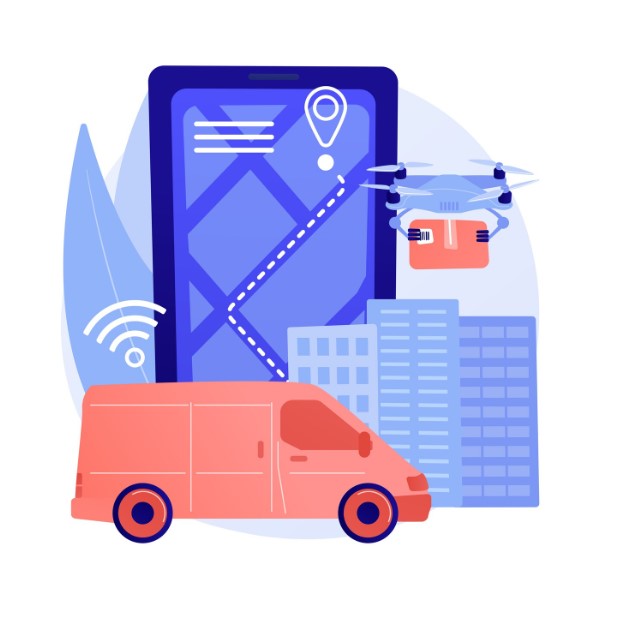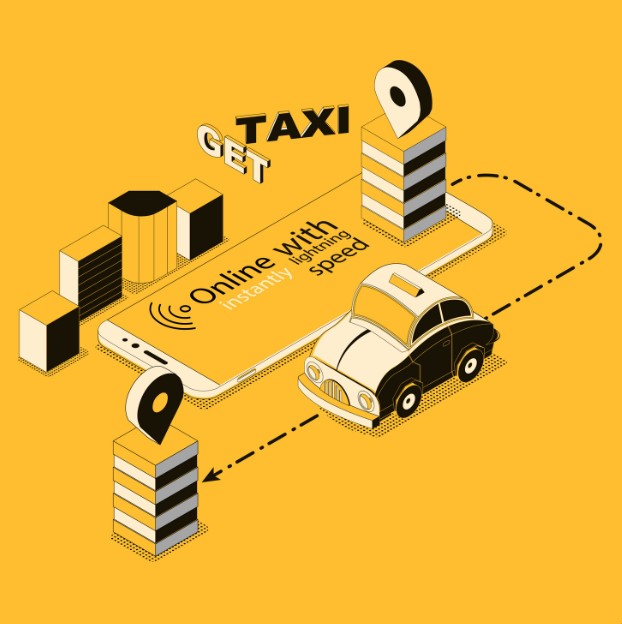From ride value to driver loyalty, every ride-hailing company has plenty of success factors to consider. Yet even with so many performance metrics, increasing ride demand remains the core driver of sustainable growth. In 2026, the taxi businesses expanding the fastest are those that rely on smart data, effective digital marketing, modern taxi software, and an exceptional customer experience to increase taxi trips and attract more passengers.
Ride-hailing operator analyzing trip data and booking trends on dashboard
In this article, we’ll look at practical ways to boost taxi bookings, improve service efficiency, and help your taxi company grow through smarter operations and a stronger online presence powered by today’s evolving taxi software solutions.
Read also: 10 Smart Strategies to Increase Taxi Customer Retention and Repeat Rides
Why Engaged Drivers Lead to More Completed Trips
Before diving into marketing tactics, it’s important to recognize one simple truth: engaged drivers are the backbone of any successful taxi operation. When drivers are well-trained, motivated, and supported, they deliver better service, passengers are more satisfied, and more rides are completed.
Even small enhancements to the driver experience — like offering dark mode in the driver app, smarter notifications, or clear and fair incentive structures — can significantly strengthen that foundation and set the stage for long-term growth.
Taxi Business Growth Trends for 2026
The ride-hailing industry is evolving at a rapid pace, and staying ahead of the curve is key to growing your taxi company this year. Below are the major trends shaping taxi business growth in 2026.
Smarter automation and dispatching.
AI-powered dispatch systems are becoming more accurate at predicting ride demand, assigning the right drivers, and reducing idle time. This means fewer unproductive moments on the road and more completed trips overall.
Green mobility and sustainability.
More passengers are actively choosing eco-friendly transportation options. Transitioning to hybrid or electric vehicles not only cuts fuel costs but also opens strong marketing opportunities around sustainable taxi service improvement.
Digital visibility is key.
A strong online presence matters more than ever. Having a well-designed taxi company website, along with accurate and up-to-date listings on Google My Business and Bing Places for Business, ensures customers can easily find and book your services.
Passenger loyalty.
Loyal riders create stable, predictable revenue. With well-designed loyalty initiatives, you can keep passengers returning, increase repeat business, and build a valuable word-of-mouth reputation that strengthens your brand over time.
Read also: How to Get More Bookings: A Step-by-Step Guide with Expert Tips That Actually Work

Practical Tips to Increase Taxi Bookings
Tip 1: Make Use of Demand Prediction and Dynamic Pricing
Smart analytics can reveal exactly when and where ride requests spike. Treat this information as your guide and use it to:
- Position your drivers strategically to maximise revenue
- Offer off-peak ride promotions to balance demand
- Apply dynamic pricing that rewards flexibility
Data-driven incentives — for example, discounts for group bookings during peak travel seasons — help you bring in more orders while optimising overall fleet performance. Pair these offers with smart app notifications so customers hear about your newest deals the moment they go live.
Tip 2: Strengthen Your Digital Presence
Your taxi digital marketing strategy directly affects how quickly passengers can discover and book your service.
- Keep your website clean, mobile-friendly, and integrated with a seamless online taxi booking system.
- Refresh your business listings on Google and Bing with quality photos, detailed reviews, accurate service zones, and updated operating hours.
- Run targeted Google and Facebook ads for taxis to reach local passengers at the exact moment they need a ride.
- Share updates on promotions, driver stories, or community events across your social channels to build trust and recognition.
A well-rounded digital presence — one that combines smart targeting with a genuine human touch — can play a decisive role in engaging riders and turning online visibility into real bookings.

Tip 3: Turn Great Service Into Lasting Customer Relationships
Your strongest marketing asset is still a satisfied passenger — especially in a crowded market where first impressions can make or break a brand. Even those short ten minutes in traffic can become a memorable experience or a missed opportunity.
In 2026, passengers increasingly value comfort, clear communication, and a genuine human connection with their driver. Sometimes even a short onboarding module focused on etiquette and customer care can significantly elevate the quality of service.
To turn one-time riders into loyal, returning customers:
- Introduce loyalty programs for taxis or a simple digital membership system
- Use app notifications to send thank-you notes and reward reminders
- Offer small personal perks, such as “welcome back” credits
Tip 4: Keep Your Vehicles in Top Shape
Whether you operate your own fleet or collaborate with driver-partners, clean, comfortable, and reliable vehicles are essential for passenger satisfaction and your brand’s reputation.
Encourage or schedule:
- Regular maintenance checks to ensure safety and performance
- Spotless cabins that enhance comfort and cleanliness
- Vehicle upgrades when older models start to harm your company’s image
- Clearly displayed safety inspection records as part of your value promise
To reinforce these habits, consider offering incentives for high-rated drivers — for example, bonuses tied to cleanliness scores or maintenance compliance. Also, monitor your reviews closely: passengers often highlight cleanliness, comfort, and vehicle condition long before internal metrics do.
Tip 5: Expand Your Service Area Strategically
The local mobility market has its limits — oversaturation is real. If boosting demand within your current area becomes difficult, it may be time to look beyond your city.
Expanding into nearby towns or suburban zones can open up entirely new opportunities with fresh audiences and far less competition. If you choose to scale outward, rely heavily on data. Booking heatmaps and feedback from your drivers will help you identify under-served zones before committing resources.
Read also: AI for Taxi Business: 10 Simple Ways to Attract More Clients
Final Thoughts on Future-Proofing Your Taxi Company
Taxi driver using a ride-hailing app to manage incoming bookings
The taxi market is becoming more competitive every year, and staying ahead now depends on how quickly you adapt. Your long-term success will come from a forward-looking taxi marketing strategy combined with practical digital tools — the things that help you stay visible, accessible, and relevant.
Think of the winning approach for 2026 as a mix of four core ingredients:
- Smart automation that takes care of repetitive tasks and dispatching
- Customer-centric service that turns every ride into a positive experience
- Data-driven marketing that puts your brand in front of the right passengers
- Sustainable operations that appeal to eco-conscious riders and reduce costs
For both traditional taxi companies and modern ride-hailing platforms, growing taxi bookings is no longer about a single tactic. It’s about aligning technology, service quality, and market understanding into one clear strategy.
And the best part? You don’t need to overhaul your entire business at once. Start small. Pick one or two ideas from this guide, apply them, and monitor how your bookings respond. Step by step, you’ll discover the combination that delivers the strongest results for your specific business — and that’s what will future-proof your taxi operation for the years ahead.
People Also Ask
1. How can I increase taxi trips in 2026?
The most effective way to increase taxi trips in 2026 is to treat your business as a data-driven service. Use demand prediction tools to understand where ride requests will appear, adjust your driver positioning accordingly, and support drivers with technology that helps them stay efficient. Combine this with a strong digital presence — clear SEO, active social media, and targeted ads — and you’ll create a steady flow of new and returning passengers. Loyalty rewards and simple in-app perks also encourage riders to choose your service more often.
2. What’s the best taxi marketing strategy for growing my taxi company?
A winning taxi marketing strategy blends visibility, trust, and consistency. Make sure your website and booking system are easy to use, update your Google and Bing listings with fresh photos and real reviews, and run campaigns that speak directly to local passengers. Highlight what makes your service better — cleaner vehicles, quick response times, or eco-friendly options. Marketing works best when it reflects real strengths of your taxi company, so align your messaging with the quality of your service.
3. How can I expand my taxi service into nearby cities?
Start expansion with research. Look at booking data, driver feedback, and local mobility trends to spot nearby zones that lack reliable transportation. Once you identify an opportunity, roll out your service gradually: test demand during peak hours, promote airport or suburban routes, and update all digital listings to include the new coverage area. Use targeted ads to let residents know your taxis are now available — this helps establish a presence quickly and builds early demand.
 Subscribe
Subscribe




